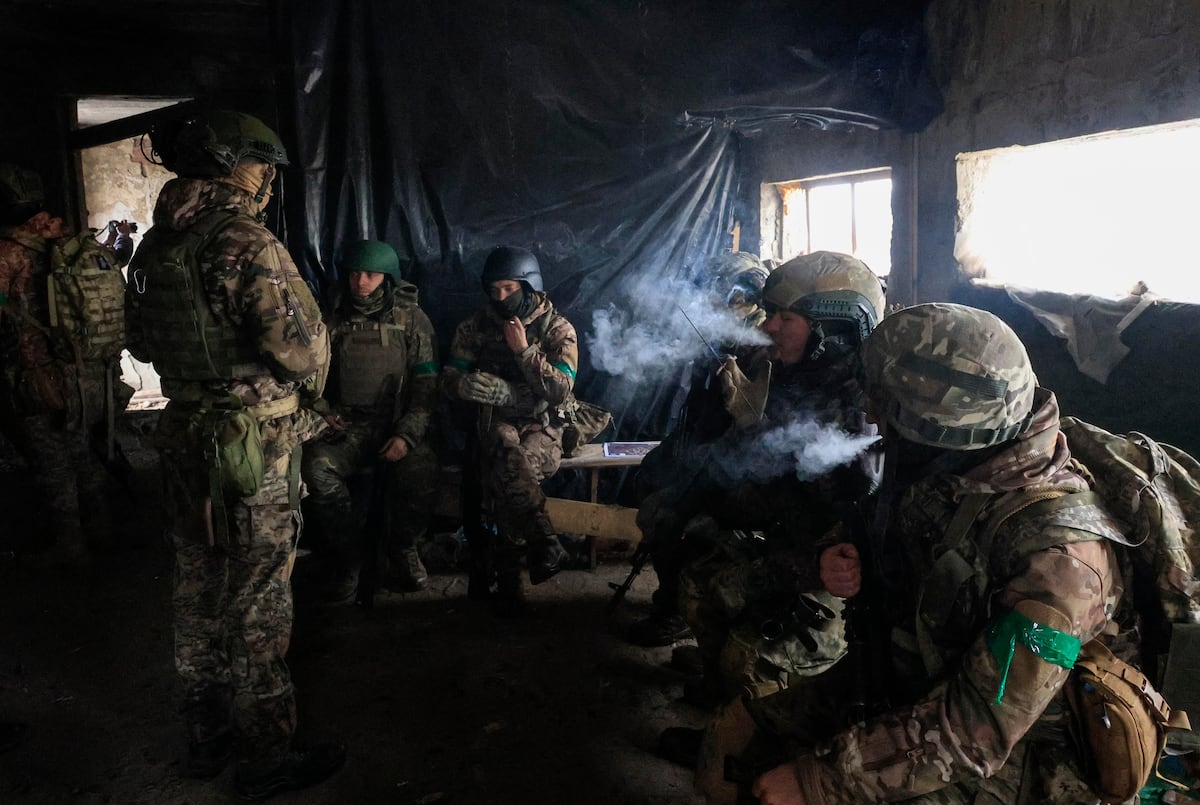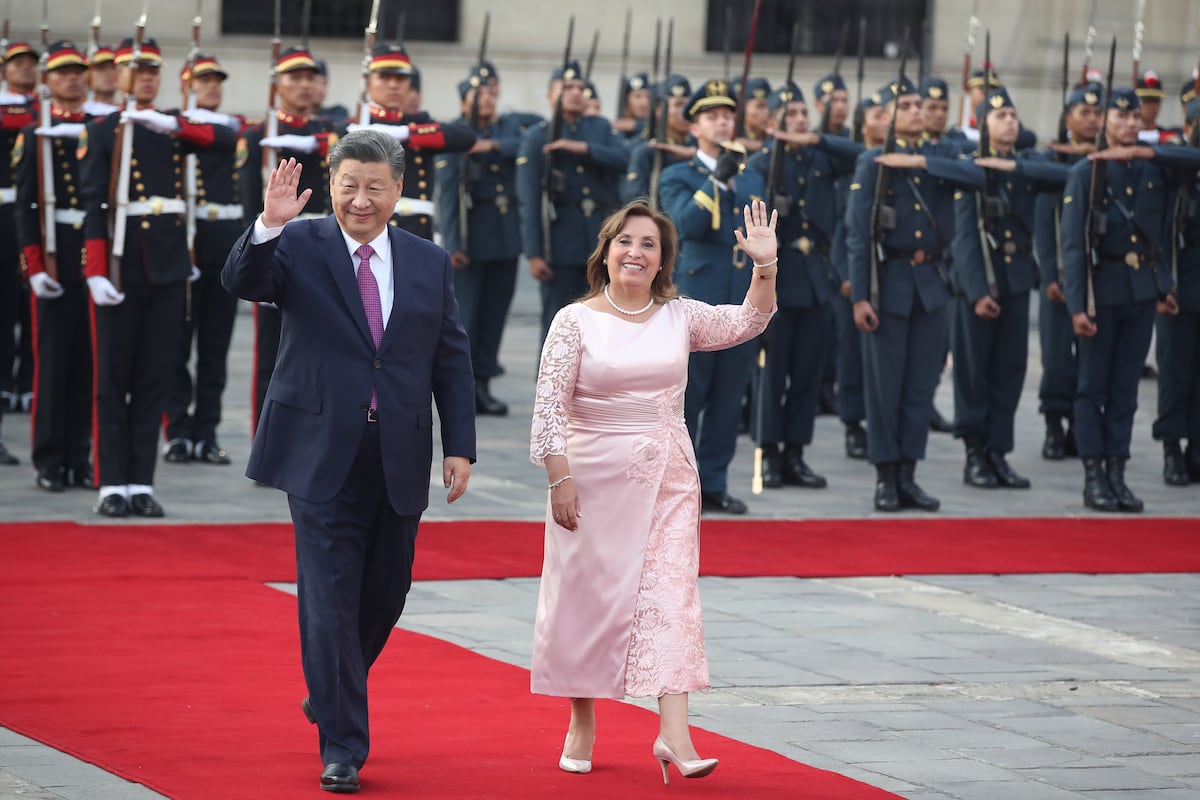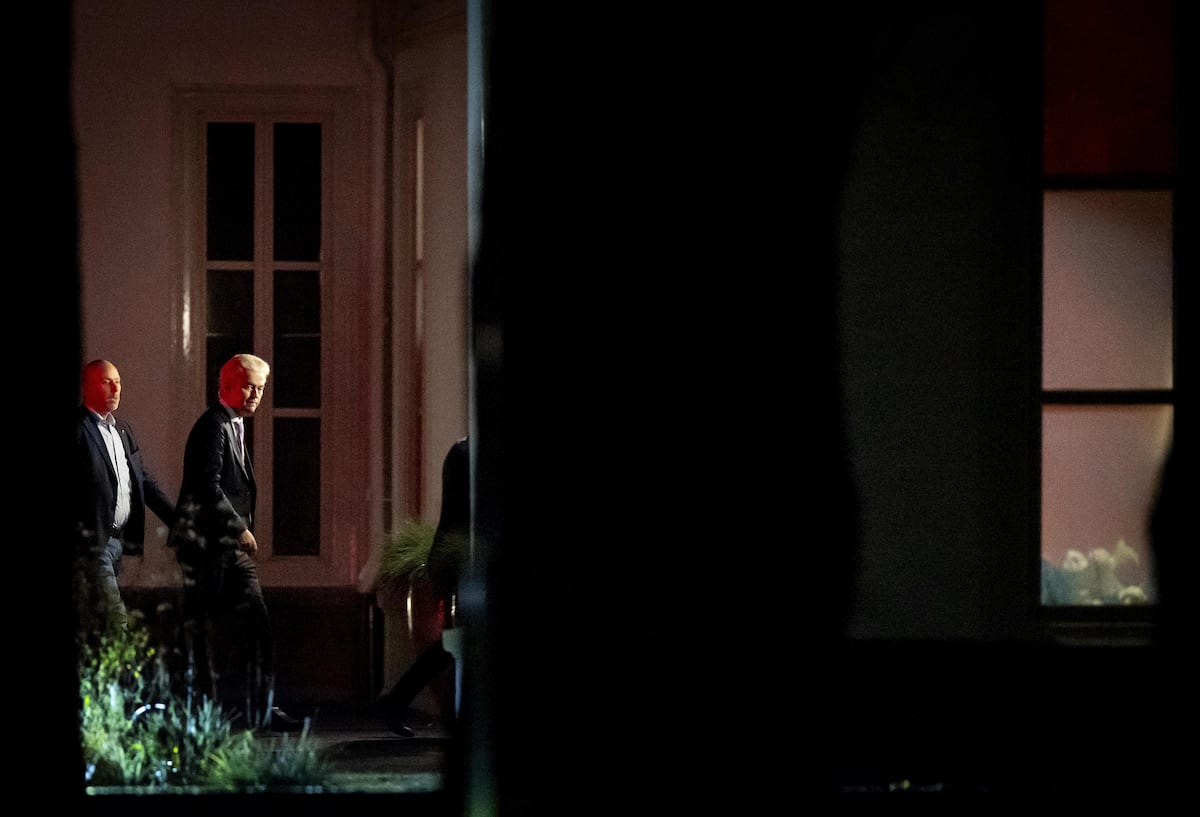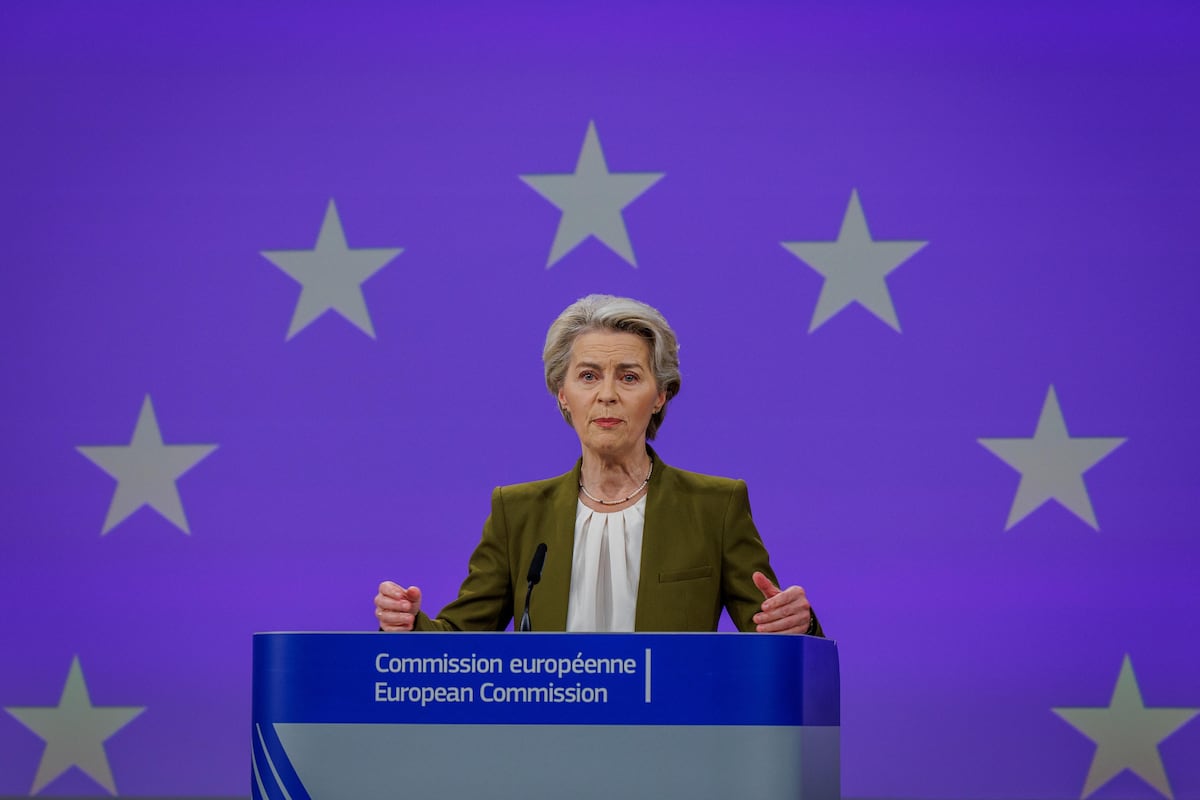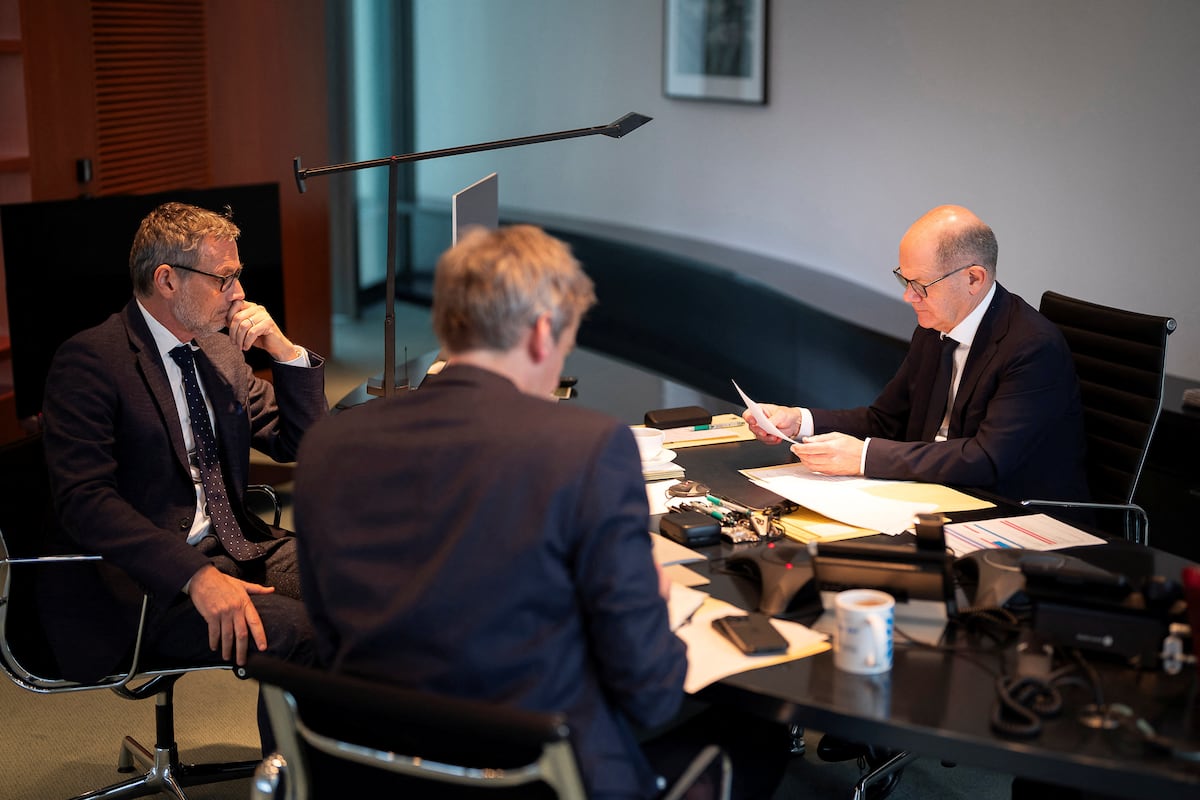In the United States there is an expression from American football that defines the strategy that has led Volodymyr Zelensky to reopen a taboo debate: Ukraine’s option to develop its own nuclear weapons. This expression is Hail Mary (translated, “Hail Mary”) and means a last desperate move to achieve a victory. Placing the trompe l’oeil of the atomic bomb on the international stage, according to experts consulted by Morning Express, would be a Hail Mary of the Ukrainian president to convince his allies to accept the invaded country into NATO and to allow it to use long-range missiles on Russian soil.
The first time Zelensky spoke about this issue was last September, during a meeting in New York with the president-elect of the United States, Donald Trump. The Ukrainian leader presented his so-called plan for victory, a five-point document from which his country would have enough military force to force Russia to the negotiating table. The most important point is that Ukraine be immediately invited to join NATO, something that the United States and Germany – mainly – have refused to do until today. “Either Ukraine has nuclear weapons to protect it, or it must be part of some alliance. And apart from NATO, I don’t know of any alliance that is effective. “I think Trump listened to me and thought it was a solid argument,” Zelensky explained of the conversation.
Former nuclear power
The Ukrainian leader insisted on this last October in Brussels, in another meeting with Western leaders to present his plan for victory. Zelensky recalled that Ukraine was the third nuclear power in the world after achieving its independence in 1991, but that it renounced its atomic weapons in 1996 in exchange for the Budapest Memorandum, a security agreement signed in 1994 with Washington, Russia and the United Kingdom. “Which of these nuclear powers suffered? All? No, Ukraine. Who gave up nuclear weapons? All of them? No, Ukraine. And who is fighting today? Ukraine”. Zelensky also repeated the words he said to Trump.
“NATO countries are not at war. People are alive in NATO countries. That is why we chose NATO, not nuclear weapons,” Zelensky added in Brussels. A day later, after the commotion caused, the president qualified his words during a meeting with the secretary general of the Atlantic Alliance, Mark Rutte: “We are not manufacturing nuclear weapons. What I wanted to say is that there is no other more powerful security option, apart from being in NATO.”
The issue has returned to the forefront of media attention when the newspaper The Timespublished a report on November 13 from the National Institute for Strategic Studies (NISS) detailing how Ukraine can develop in a matter of months a rudimentary atomic bomb that would be one-tenth the power of the one dropped by the United States on Nagasaki in 1945. Ukraine It has enough plutonium in its nuclear power plants to manufacture a hundred of these tactical nuclear bombs, according to the report. The NISS is a defense analysis center under the office of the president. The document was presented to the Ministry of Defense.
The spokesperson for the Ukrainian Foreign Ministry reacted instantly by denying in a statement that his country wants to have nuclear weapons: “Ukraine supports the Nuclear Non-Proliferation Treaty, we do not have, we do not develop and we have no intention of acquiring atomic weapons. “Ukraine cooperates closely with the International Atomic Energy Agency and is fully transparent in its monitoring, which excludes the use of nuclear material for military purposes.”
Mikhail Podoliak, Zelensky’s advisor, contributed another perspective to the debate to the RBC agency on Thursday: if Ukraine saw that the atomic bomb was useful, it would develop it, but it believes that it is not. “If it were a decision that could definitively change the situation on the front, then it would be possible to do so, despite all the legal and reputational difficulties, but it is not a measure that will bring us significant change on the front,” Podoliak said. .
The advisor to the president’s office specified that the weaponry that can represent a leap forward is the contribution of more long-range missiles and the authorization to be used on Russian soil, something that at the moment key partners such as the United States or Germany do not allow. The NISS report indicates that the atomic bomb that Ukraine could develop would have “sufficient power to destroy an entire Russian air base or a concentration of military, logistical or industrial facilities.”
An interview last September in Ukraine caused a huge media stir in Ukraine. Espressowith former Deputy Prime Minister Oleg Ribachuk in which he warned that if the United States did not support Ukraine enough, the country should use its capacity to make nuclear bombs: “It is realistic to say that we can start developing our nuclear weapons, following the example of Israel, who say they do not have them.”
“A provocation”
“The Foreign Ministry has already made it clear that there is no nuclear program, end of matter,” says Oleksii Melnik, co-director of the Razumkov Center for Defense and Geopolitical Studies. “Zelensky’s statements should be understood as a provocation towards the allies, not as a declaration of intentions: if you do not give us security guarantees, what should we do? Have the atomic bomb?” Melnik illustrates.
Tadeusz Iwanski, a researcher at the Center for Eastern Studies in Warsaw, believes that provocationof Zelensky or Podoliak’s words “are a subtle messagefor the West, and specifically the United States, to deliver long-range weapons and lift their restrictions. “It is very risky because it triggers alarms in the West and fuels Russian propaganda that Ukraine is manufacturing a dirty bomb.”
Mikola Bielieskov, an expert from the NISS, does not want to evaluate the “speculations” about a Ukrainian nuclear bomb, but he does highlight that what is at stake is nuclear non-proliferation when NATO does not give sufficient help to Ukraine against a power nuclear like Russia. Bielieskov also cites an article published this November in the Bulletin of the Atomic Scientists written by Mariana Budjerin, researcher at the Belfer Center at the Harvard Kennedy School in the United States. There are three possible explanations for “Zelensky’s resurrection of the proposal: either NATO, or nuclear bombs,” according to Budjerin: “Either it is a real nuclear threat”; “a desperate bluff to convince the West to invite Ukraine to NATO”; or “a reminder of the Ukrainian contribution, in good faith, to nuclear non-proliferation in the 1990s.”
Budjerin favors the idea that Zelensky “may be playing an old role used in the past by US allies of balancing nuclear proliferation in exchange for better security guarantees.” This expert indicates that this strategy is likely to fail because it would distance Ukraine from its Western partners and from being part of the EU. Melnik uses precisely the rejection that Ukraine having a nuclear military program would provoke in the West as proof that it is impossible for it to be a reality.
Budjerin concludes the article by warning that a nuclear-armed Ukraine cannot be ruled out: “Only a solid long-term solution, such as NATO membership, will bury the ghost of a nuclear-armed Ukraine.” The co-director of the Razumkov Center adds that the debate generated also aims to alert the United States and European powers that they failed Ukraine when in 1994 they committed to defend it in exchange for giving up the atomic bomb: “It is an opportunity for the West Make it clear to Russia that its new normal, legitimizing new nuclearized countries like North Korea or Iran, will not work.”

